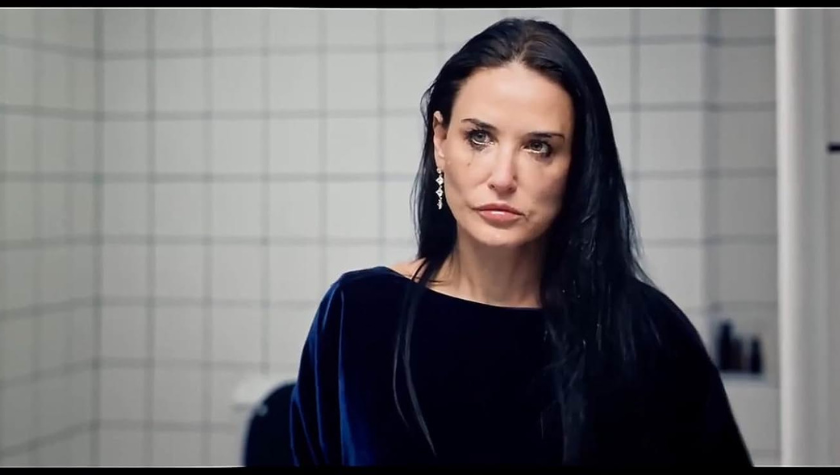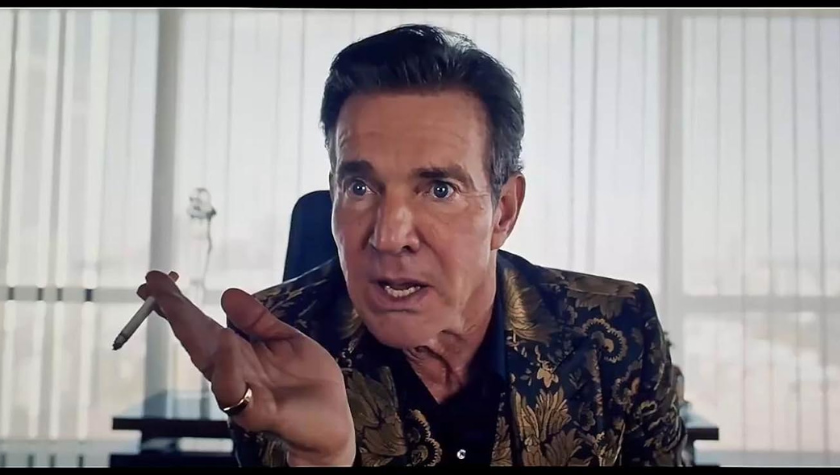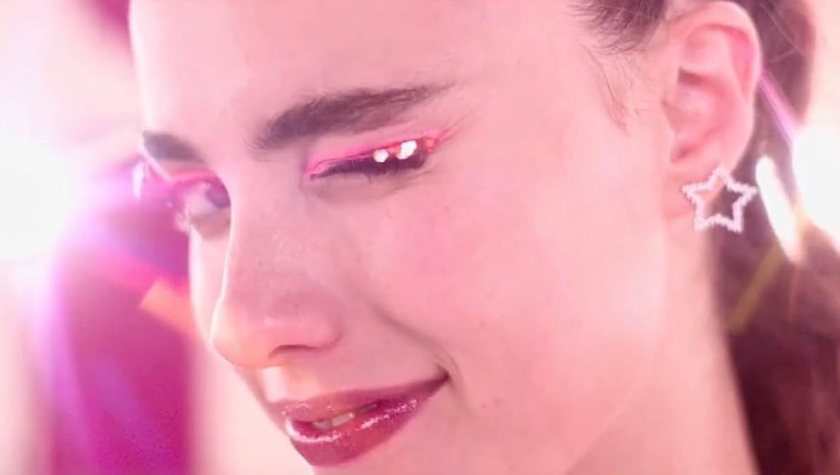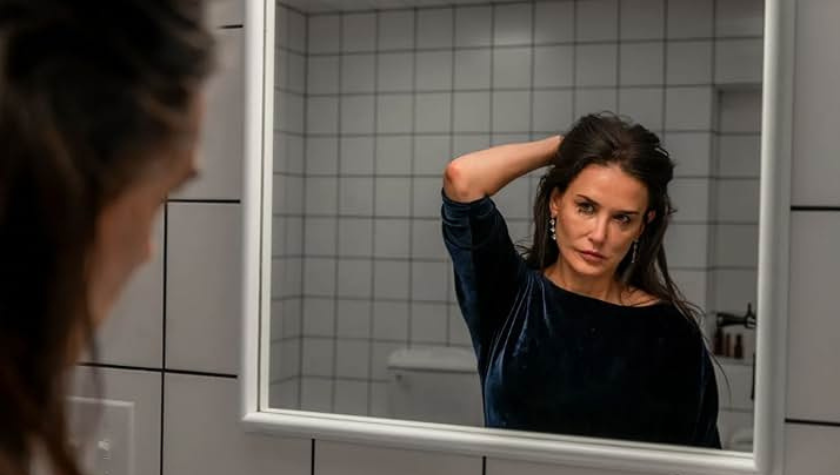THE SUBSTANCE and how to write Body Horror
October 11, 2024
Hormones. Puberty. Weight gain. Cancer. Aging. Menopause. Mental decline.
Add societal pressures and unrealistic beauty standards, and we have just a few of the ways our bodies seem to betray us. Most of us can think of a time when we were feeling happy and in control, when suddenly our body did something unexpected, possibly even disgusting. When this happens, it can lead to a devastating loss of control, and fear that may escalate into dread and self-loathing. These are the human vulnerabilities that the genre of body horror uses to successfully torment us, and when it comes to the new film The Substance, the genre has hit a new outrageous high.

Margaret Qualley in THE SUBSTANCE
What Exactly is Body Horror?
Simply put, body horror is a subgenre of horror that focuses on the grotesque and unnatural transformation of the human body. Body horror takes the fear of the fragility of our bodies to the extreme using graphic and disturbing imagery that usually includes lots and lots of blood. The physical terror turns psychological and vice versa.
Revered in the body horror genre is filmmaker David Cronenberg whose films The Fly (1986), Dead Ringers (1988) and Crash (1996), all push the human body to extremes and explore themes of transformation, deformity, humiliation and disgust. Though Cronenberg doesn’t enjoy the moniker of body horror, “That’s not my term,” he told Wired Magazine, he does admit filmmaking by its very nature is about the experience of the body.
“Well, you have to realize that almost all of filmmaking is body, for anybody. You can’t photograph an abstract concept. You are photographing the human body, and primarily the face. So I think that any filmmaker, if he’s honest about it, will realize that at the bottom of what he’s doing is body orientation and body consciousness,” Cronenberg says. Fair, though I think there’s more flesh-based terror going on in his movies than perhaps he’s willing to admit.
But now there’s a new body horror master and this time it’s a woman: French filmmaker Coralie Fargeat, whose new film The Substance is enthralling and repulsing audiences in equal measure. Fargeat won Best Screenplay at the Cannes Film Festival for The Substance and there’s early Oscar buzz for lead actress Demi Moore, who holds nothing back in her performance.
With fearless performances, stark dialogue, EDM music and bloody, clumpy, disfigured female bodies that birth a spectrum of other deformed body parts, The Substance is must-see cinema for all horror fans. So what makes Fargeat’s film so groundbreaking? Here are three ways she pushes genre boundaries that will make this film a classic for years to come.

The Many Horrors of Female Aging
So much of aging for women is about losing that coveted youthful appearance and sex appeal. But it’s also about becoming socially irrelevant. After Fargeat turned 40, she wasn’t sure anyone would be interested in her point of view as a storyteller. She recently told Vogue, “I had these massive thoughts that I had reached the age where I wasn’t going to be useful or interesting to anyone anymore… the violence of those thoughts was so strong that I had to do something about it—otherwise it would totally destroy and crush me.”
Fargeat decided to explore those violent thoughts by focusing on a Hollywood actress, Elisabeth Sparkle (Moore), who was now a television fitness guru (not unlike a young Jane Fonda). This character is the perfect vehicle to write about the extremes of a woman’s body under the microscope of Hollywood. When Elisabeth is let go from her TV show on her 50th birthday by network exec Harvey (Dennis Quaid), whose name can’t be an accident, she begins to spiral. When she’s offered access to an experimental injectable drug that promises a fresher, younger self, she feels she has no choice but to go for it. The only restriction of the drug is that she must share her time (seven days on and seven days off) with her younger self. Much like the rules of Gremlins (1984), if you don’t adhere to the drug’s strict seven-day rule, there will be hell to pay.
Fargeat could have simply focused on the physical part of aging, but instead, she makes the story more about what’s going on psychologically with Elisabeth. By casting Demi Moore, one of the most beautiful women in the world at any age, Elisabeth’s desire to use the Substance becomes more about the irrational fears an aging actress experiences. Films like Sunset Boulevard and All About Eve explore these themes also, but on a less visually intrusive scale. All women – at every age – know there will always be a younger, shinier, skinnier woman ready to take her place. And that’s what happens when “Sue” (Margaret Qualley), is born out of Elisabeth’s spinal column – not her womb – because the spine is directly connected to the brain, the source of her fears.

Dennis Quaid in THE SUBSTANCE
Rebellion Against the Male Gaze
There are numerous scenes in the film where we see Elisabeth, then Sue, performing a workout routine in a skimpy thong leotard. The camera is as close on their perfect butts as it can get. And it stays there. The camera may occasionally move, but inevitably it returns to the women’s butts as they shimmy, gyrate and shake those cheeks. By taking these camera shots to the extreme, Fargeat distorts the male gaze by obsessively taking it over the top. This shot in particular soon becomes excessive and even embarrassing, exposing the shallow true nature of the male gaze.
Much of the film is shot through Fargeat’s female gaze that is less about how a woman sees a man’s body and more about how a woman sees her own body. This specific gaze can most clearly be seen through the way Elisabeth looks at herself in the mirror. There is a scene where Elisabeth is getting ready to go on a date with a former friend from high school where Fargeat treads into psychological territory by simply filming Elisabeth putting on her makeup. Elisabeth becomes so disgusted with her appearance, she smears off the makeup then reapplies it over and over until she can no longer see any redeeming qualities in her image. She forfeits the date to sulk alone in her apartment.
It’s moments like these that stand out from the gore and express what it’s truly like to be a woman facing an uphill battle against time.

Margaret Qualley in THE SUBSTANCE
Over the Top Humor
Those important moments of subtlety are gloriously overshadowed by the outrageous CGI, body prosthetics and buckets of blood that are fitting of the genre. Fargeat never holds back, building up to one of the most disgusting yet hilarious film endings ever put into a movie. I don’t want to spoil it for anyone who hasn’t seen the film, but the audience I saw it with was squealing with laughter.
All I will say about the ending is that the film returns to its opening image of Elisabeth’s star on Hollywood’s Walk of Fame with Elisabeth’s body “reinvented” after the inevitable misuse of the Substance. While the “joke” is on Elisabeth for most of the film as her body spirals into worse and worse condition while her younger self abuses the Substance, the ending redirects the joke to the Hollywood machine itself, suggesting that the film industry as a whole is as shallow and meaningless as an actor’s cracked and dirty terrazzo and brass star long after that actor is forgotten.
The Substance is currently playing in theaters.
Written by: Shanee Edwards
Shanee Edwards is an L.A.-based screenwriter, journalist and novelist who recently won The Next MacGyver television writing competition to create a TV show about a female engineer and was honored to be mentored by actress/producers America Ferrera. Shanee's first novel, Ada Lovelace: The Countess Who Dreamed in Numbers was published by Conrad Press in 2019. Currently, she is working on a biopic of controversial nurse Florence Nightingale. Shanee’s ultimate goal is to tell stories about strong, spirited women whose passion, humor and courage inspire us all.



